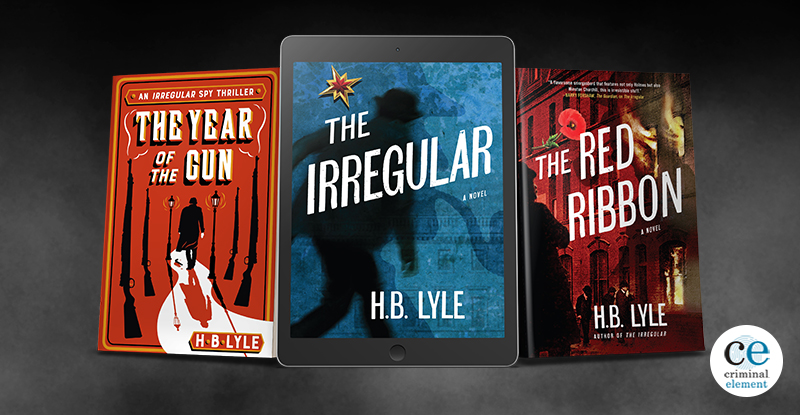Who are the Real Baker Street Irregulars?
By H. B. Lyle
May 10, 2021
Who are the real Baker Street Irregulars? Are they a gang of street kids who worked for Sherlock Holmes, appearing in only three stories but nevertheless spawning at least three major TV shows in the last 30 years; or are they the US’s first and most famous Sherlockian society? Or are they actually Winston Churchill’s favourite war time department, a crew of upper crust desperadoes intent on mayhem and chaos? The story of the Irregulars is a story that tells us so much about Conan Doyle’s myth-making abilities, the place of Sherlock Holmes in our culture and even the creation of modern fandom as we know it today.
In the very first Holmes story, the novel A Study in Scarlet, the Irregulars are called upon by Holmes to track down a cabby. They are a rag-tag gang of street kids, ‘as sharp as needles’, urchins—known at the time as ‘street Arabs’—that owes much to Oliver Twist and Fagin’s gang. Led by a super-smart kid with attitude named Wiggins (a character I grew up and used as the hero of my own secret service novels), Holmes calls them ‘the Baker Street Division of the police force.’ They appear again in the second novel, The Sign of Four, where the detective sends them into the city in search of a getaway boat. He uses them because in his words ‘They can go everywhere, see everyone, overhear everything.’
As this quotation shows, street children were a common sight in Victorian Britain, particularly in cities. They were invisible to most people. The Irregulars form a vital part of Conan Doyle’s world-building for the Holmes stories. Any picture of 1880s London would be incomplete without such children. Clever, brazen, unseen.
It’s a tribute to Conan Doyle’s skills as a writer and myth-maker that the Irregulars appeared as a gang in no other Holmes stories. There’s a mention of a single irregular, ‘Simpson’, used as a lookout in one further story and that’s it. And yet, like the arch-villain Professor Moriarty (who appears in person in only one story—an appearance, incidentally, that directly inspired T. S. Eliot’s practical cat, Macavity), the Irregulars have reached such a totemic status that they even had a UK government department named after them.
In 1940, when Nazi Germany’s power was spreading across Europe, Winston Churchill became prime minister and demanded a department to ‘go and set Europe ablaze.’ The Special Operations Executive (SOE) was born, with explicit instructions to cause mayhem and chaos. Murder, sabotage, terrorism—everything was on the table, and male and female agents were sent into occupied territory to do just that, often with a variety of deadly gadgets and weapons and increasingly unorthodox techniques. SOE was headquartered in Baker Street, growing from a small office to almost half the street as the war went on. The Baker Street Irregulars, as SOE became known in government circles, soon became Churchill’s favourite department of all, and played a vital role in liberating Western Europe.
But the irregulars, these rag-tag bag of street children, created in so few words by Conan Doyle, had already gained some kind of fame in America. Soon after Conan Doyle’s death in the early 1930s, American journalist and writer Christopher Morley set up a dining club in New York City for friends of his he knew to be Sherlock Holmes fans, called The Baker Street Irregulars. It became the first Sherlock Holmes society in the world. There are now hundreds worldwide. One of the conceits behind the BSI is that they treat each of the Holmes stories as ‘true history’, and that Conan Doyle was nothing more than Dr. Watson’s literary agent and editor. There’s much fun to be had in playing ‘the game’, trying to square every detail of the stories with recorded historical fact, from exact dates, to the weather and even to the precise details of Watson’s war wound (in one story, it was a bullet wound in the thigh; in another, the wound was in his shoulder. This led to speculation that he was bending down when shot, the bullet thus passing through his shoulder into his leg.)
What the immense success of the BSI and its legion of imitators shows, is that yet again Conan Doyle and Sherlock Holmes blazed a trail. Holmes was one of the first characters to gain a fandom in the way we understand it today, with fervent admirers treating his life as real, with reams of fan fiction, and fierce debates about what constitutes true allegiance.
As someone who has used the Irregulars and their leader Wiggins as my own inspiration for three novels and counting, it comes as no surprise to see Netflix joining the celebration. We must all acknowledge our debt to Sherlock Holmes. Whether we are writers of superhero narratives, detective fictions, or superfans, drama commissioners, academics, or historians, The Irregulars shows that when it comes to making modern myths, Sir Arthur Conan Doyle is still the master.
More: Read Our Review of The Red Ribbon by H. B. Lyle’s The Red Ribbon
Comments are closed.

Fictional profile. The original Baker Street Irregulars are fictional characters featured in the Sherlock Holmes stories of Arthur Conan Doyle. The group of street urchins is led by a boy called Wiggins. They run errands and track down information for Holmes.
According to the PayMyDoctor, both register and nonregistered patients make your bill online in easy steps. For registered customer after enter login information they access their PayMyDoctor account. You need to enter Client ID *: Account Number, Five Digit Zip Code, and Bill Pay Id and payment details which method would you like to use.
Thanks for sharing this valuable content. In my view, if all webmasters and content writers were creating good content like you, the website would be more useful than ever.